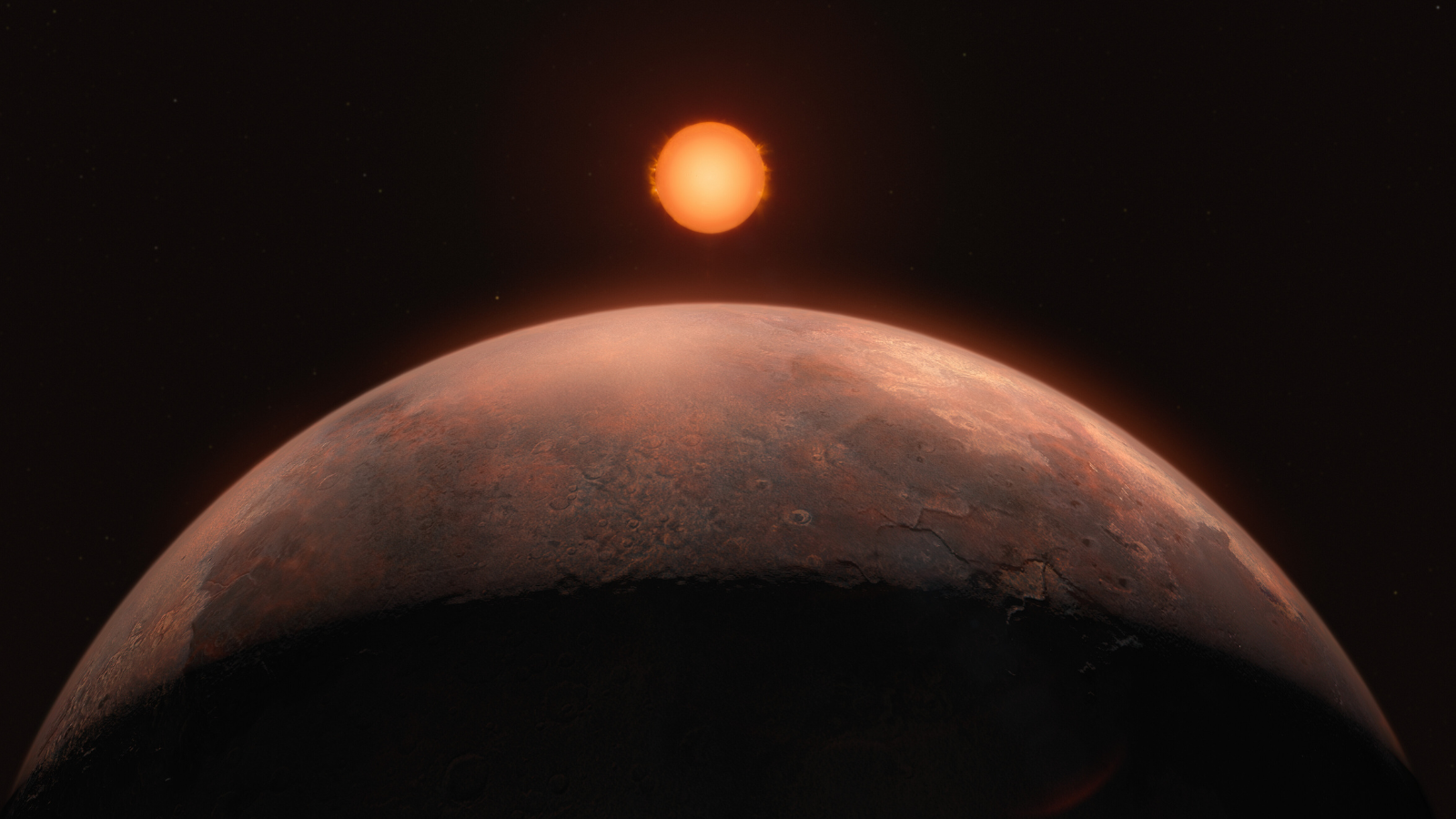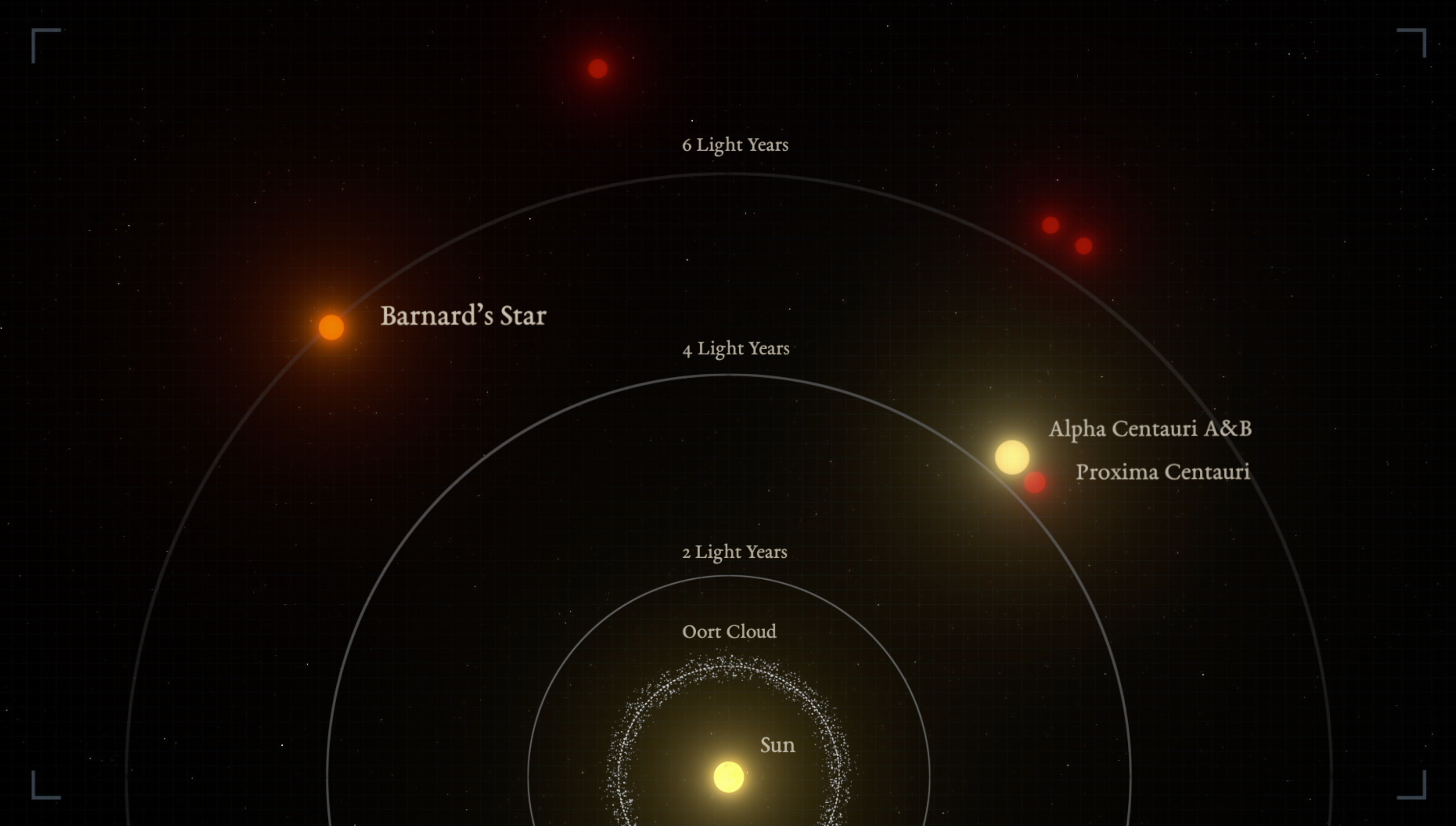
Astronomers have discovered a planet orbiting the closest solo star to the solar system, known as Barnard's star. The newly discovered exoplanet has around half the mass of Venus, which classifies it as a "sub-Earth."
The exoplanet, designated Barnard b, takes just over three Earth days to orbit its red dwarf parent star, which is located around six light-years away. That's because Barnard b is just around 1.8 million miles from Barnard's star. Although this may sound like an immense distance, it is only 5% of the distance between the sun and its closest planet, Mercury.
"Barnard b is one of the lowest-mass exoplanets known and one of the few known with a mass less than that of Earth. But the planet is too close to the host star, closer than the habitable zone," team leader Jonay González Hernández, from the Instituto de Astrofísica de Canarias in Spain, said in a statement. "Even if the star is about 2,500 degrees cooler than our sun, it is too hot to maintain liquid water on the surface."

González Hernández and colleagues discovered Barnard b using the Very Large Telescope (VLT), an array of four telescopes located on the mountain Cerro Paranal in the Atacama Desert of northern Chile.
Related: James Webb Space Telescope finds 'puffball' exoplanet is uniquely lopsided
The exoplanet revealed itself via the tiny "wobble" it causes in the motion of its red dwarf star as it orbits that star, gravitationally tugging on it. This detection was possible thanks to the VLT instrument called "the Echelle Spectrograph for Rocky Exoplanet and Stable Spectroscopic Observations," or ESPRESSO. The initial detection was then confirmed using data from the exoplanet-hunting High Accuracy Radial Velocity Planet Searcher (HARPS).
Hello neighbor(s)!
Barnard's star isn't the closest star to the solar system; that honor goes to the Alpha Centauri stars, Proxima Centauri, Centauri A and Centauri B. The distinction between these stars and Barnard's star is that they are part of a multi-star system, while Barnard's star flies solo, just like the sun.
The proximity of Barnard's star to our planet has made it a prime target in the search for Earth-like rocky planets.
Additionally, low-mass terrestrial exoplanets are easier to detect around red dwarfs like Barnard's star, which also happen to be the most common stars in the Milky Way.
Barnard's star has a surface temperature of just around 5,000 degrees Fahrenheit (2,800 degrees Celsius) compared to the 10,000 Fahrenheit (5,600 Celsius) surface temperature of the sun. The red dwarf star is 80% smaller than the sun.
However, there is another important difference between Barnard's star and the sun; this red dwarf is also thought to be less rich in "metals," the name that astronomers give to elements heavier than hydrogen and helium. Metal-poor stars are thought to be at a disadvantage in forming terrestrial planets in orbits around them.
That didn't deter González Hernández and the team from scouring the region around Barnard B for signals from possible exoplanets. The team has been particularly interested in rocky worlds in the habitable zone around this close star.
This region, also known as the "Goldilocks zone," is special because it is the area around a star that is neither too hot nor too cold to allow liquid water to exist on an orbiting planet without boiling away or freezing.
"Even if it took a long time, we were always confident that we could find something," González Hernández said.
The same team also found tantalizing hints of another three potential exoplanets around Barnard's star, which they aim to confirm with ESPRESSO.
"We now need to continue observing this star to confirm the other candidate signals," team member Alejandro Suárez Mascareño, a researcher also at the Instituto de Astrofísica de Canarias, said in the statement. "The discovery of this planet, along with other previous discoveries such as Proxima b and d, shows that our cosmic backyard is full of low-mass planets."
The team's research was published on Tuesday (Oct. 1) in the journal Astronomy & Astrophysics.







